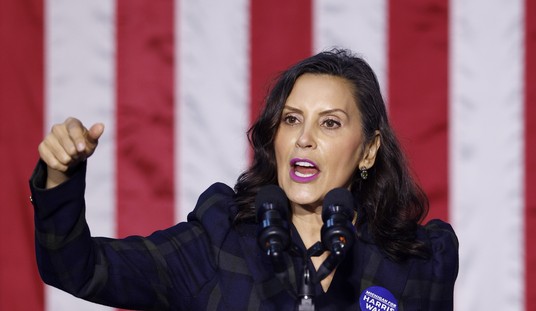Rumors of an expanded Iranian diplomatic presence in Nicaragua have swirled in and out of the Beltway for some time. The move made sense for a regime attempting to build a global movement for its radical Islamist goals as well as its mortal antipathy for the US, as Nicaragua’s government has little love for America, either. The Washington Post snarkily debunks the rumor of a mega-embassy in Managua, but that may not be the same thing:
For months, the reports percolated in Washington and other capitals. Iran was constructing a major beachhead in Nicaragua as part of a diplomatic push into Latin America, featuring huge investment deals, new embassies and even TV programming from the Islamic republic.
“The Iranians are building a huge embassy in Managua,” Secretary of State Hillary Rodham Clinton warned in May. “And you can only imagine what that’s for.”
But here in Nicaragua, no one can find any super-embassy.
Nicaraguan reporters scoured the sprawling tropical city in search of the embassy construction site. Nothing. Nicaraguan Chamber of Commerce chief Ernesto Porta laughed and said: “It doesn’t exist.” Government officials say the U.S. Embassy complex is the only “mega-embassy” in Managua. A U.S. diplomat in Managua conceded: “There is no huge Iranian Embassy being built as far as we can tell.”
The mysterious, unseen giant embassy underscores how Iran’s expansion into Latin America may be less substantive than some in Washington fear.
Hillary Clinton may have made the rumors into a plan to build a huge embassy complex, but that wasn’t the big worry at all. Michael Rubin explains that the issue was diplomatic presence, not the size of the buildings, and that the Post did a poor job of researching their story:
The Washington Post has an article downplaying rumors of Iran’s presence in Nicaragua, and quoting folks from Secretary of State Hillary Clinton to Rep. Connie Mack to yours truly mentioning it, then juxtaposing these with a Nicaraguan who likens the Iranian presence to the poor intelligence regarding Iraq’s weapons of mass destruction.
The authors, Anne-Marie O’Connor and Mary Beth Sheridan, did not try did not speak to me but cite this piece of mine. Strangely, though, they ignore my sourcing, a footnote following the sentence pointing to a September 2007 piece in the Miami Herald. Ignoring sourcing is a strange way for the Washington Post to determine sourcing, and might be an issue which the news editor should ask O’Connor or Sheridan. According to the Miami Herald, the source appears to be Ahmadinejad and unnamed diplomats. O’Connor and Sheridan’s did not ask the Miami Herald and its columnist to elaborate.
Indeed, the Miami Herald piece made no mention of construction projects — just the rapid pace of Iranian diplomatic presence in Latin America and its goals:
In addition to opening an embassy in Bolivia, Iran is expanding its diplomatic missions across the region. After attending the inauguration of Nicaraguan President Daniel Ortega and receiving two state medals from him in January, Ahmadinejad has stationed about 20 Iranian officials at his embassy there, which has by now become one of the largest in that country, Western diplomats say.
Earlier this year, the Iranian foreign ministry held its First International Seminar on Latin America in Tehran. …
First, he is seeking Latin American support to counter U.S. and European pressures to stop Iran from developing nuclear capabilities. Venezuela and Cuba were, alongside Syria, the only three countries that supported Iran’s nuclear program in a February 2006 vote at the United Nations’ International Atomic Energy Agency.
Second, Ahmadinejad wants to strike back at the United States in its own hemisphere. Iran may want to be able to finance anti-American groups and possibly destabilize U.S.-friendly governments in order to negotiate with Washington from a position of greater strength. Following the U.S. invasion of Iraq, Iran seems to be saying: “You got into my neighborhood; now I’m getting into yours.”
Rubin also notes that O’Connor and Sheridan left a little out from their description of one of the sources they did contact for their debunking:
Reporters often twist stories by playing with affiliations. O’Connor and Sheridan both do this. They describe Farideh Farhi as “an expert on Iran’s foreign policy at the University of Hawaii at Manoa.” The Iranian press, however, talks more often about Farhi’s tenure at the Islamic Republic’s foreign ministry, something Farhi now keeps off her c.v.
In other words, the Post deliberately neglected to mention that their source works for the same regime that generates the danger that their piece minimizes. Shouldn’t the Post’s readers have known that Farhi has a conflict of interest in this story?
Besides, as Rubin argues, no one really cares about the size of the building Iran will occupy in Managua. We’re more concerned about the size of their effort in these nations to create hostility towards the US and support for their development of nuclear weapons. When the Post decides to actually check sources and stop limiting itself to stooges for the Iranian mullahs, maybe they’ll figure that out.








Join the conversation as a VIP Member